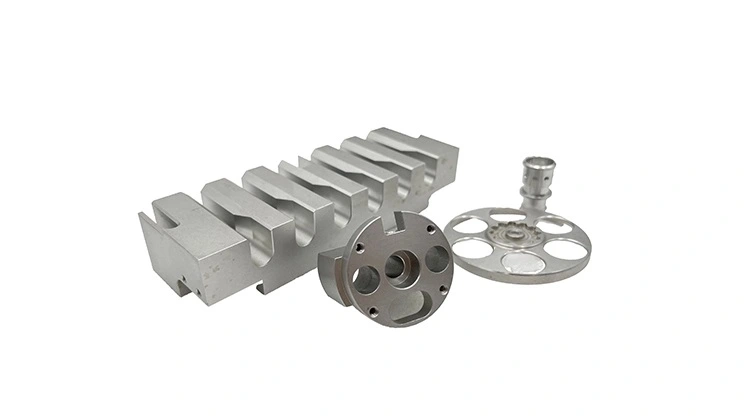Feb 11 , 2025
In today’s fast-paced manufacturing landscape, businesses are constantly seeking efficient and cost-effective ways to produce high-quality parts without committing to large-scale production. This is where low volume CNC machining shines. But what exactly makes this manufacturing method so advantageous? Let’s explore the key benefits of low volume CNC machining and why it’s becoming a go-to solution for industries worldwide.

One of the most significant advantages of low volume CNC machining is its cost-effectiveness for small batches. Traditional manufacturing methods, such as injection molding or die casting, often require expensive tooling and setup costs, which are only justified for high-volume production. In contrast, CNC machining eliminates the need for custom tooling, making it a more affordable option for producing smaller quantities. This is particularly beneficial for startups, small businesses, or projects with limited budgets.
CNC machining is renowned for its ability to produce parts with exceptional precision and tight tolerances. This level of accuracy is maintained across all units, ensuring consistency even in low volume production. Whether you’re creating complex geometries or intricate designs, CNC machines deliver reliable results, making them ideal for industries like aerospace, medical devices, and automotive, where precision is non-negotiable.
Low volume CNC machining offers unparalleled flexibility, allowing for quick design changes and customization. Unlike mass production methods that require costly and time-consuming tooling adjustments, CNC machines can easily adapt to new designs by simply updating the computer program. This makes it an excellent choice for prototyping, custom parts, or iterative design processes where modifications are frequent.
Without the need for extensive tooling setup, low volume CNC machining significantly reduces lead times. This means businesses can move from concept to finished product much faster, enabling quicker market entry and faster response to customer demands. For industries that require rapid prototyping or on-demand production, this speed is a game-changer.
Low volume CNC machining supports a broad range of materials, including metals (aluminum, stainless steel, titanium), plastics (ABS, PEEK, nylon), and even composites. This versatility allows businesses to choose the most suitable material for their specific application, whether it’s for strength, durability, or thermal resistance. The ability to work with diverse materials makes CNC machining a versatile solution for various industries.
Low volume CNC machining provides the flexibility to scale production as needed. Businesses can start with a small batch to test the market or validate a design and then gradually increase production volume as demand grows. This scalability minimizes financial risk and allows companies to adapt to changing market conditions without overcommitting resources.
CNC machining is a subtractive manufacturing process, meaning material is removed from a solid block to create the final part. While this does generate some waste, modern CNC machines are highly efficient, optimizing material usage and minimizing excess. Additionally, low volume production inherently reduces overproduction and waste, contributing to more sustainable manufacturing practices.
CNC machining not only delivers precise dimensions but also produces parts with excellent surface finishes. This reduces the need for additional post-processing, saving time and costs. For industries where aesthetics or surface quality is critical, such as consumer electronics or medical devices, this is a significant advantage.
Low volume CNC machining is a preferred method for prototyping because it allows engineers to create functional, high-quality prototypes that closely resemble the final product. These prototypes can be tested for performance, fit, and durability, enabling businesses to identify and address potential issues before moving to mass production.
Unlike many traditional manufacturing methods that require large minimum order quantities, low volume CNC machining has no such restrictions. This makes it accessible for businesses that need only a few parts, whether for prototyping, custom orders, or niche applications.
Low volume CNC machining offers a host of benefits that make it an attractive option for businesses seeking precision, flexibility, and cost-effectiveness in small-scale production. From reducing upfront costs and lead times to enabling customization and scalability, this manufacturing method empowers companies to innovate and respond to market demands efficiently.
Whether you’re developing a prototype, producing custom parts, or testing a new product, low volume CNC machining provides the tools to bring your ideas to life with unmatched quality and efficiency. As industries continue to evolve, the demand for low volume CNC machining is only expected to grow, solidifying its place as a cornerstone of modern manufacturing.